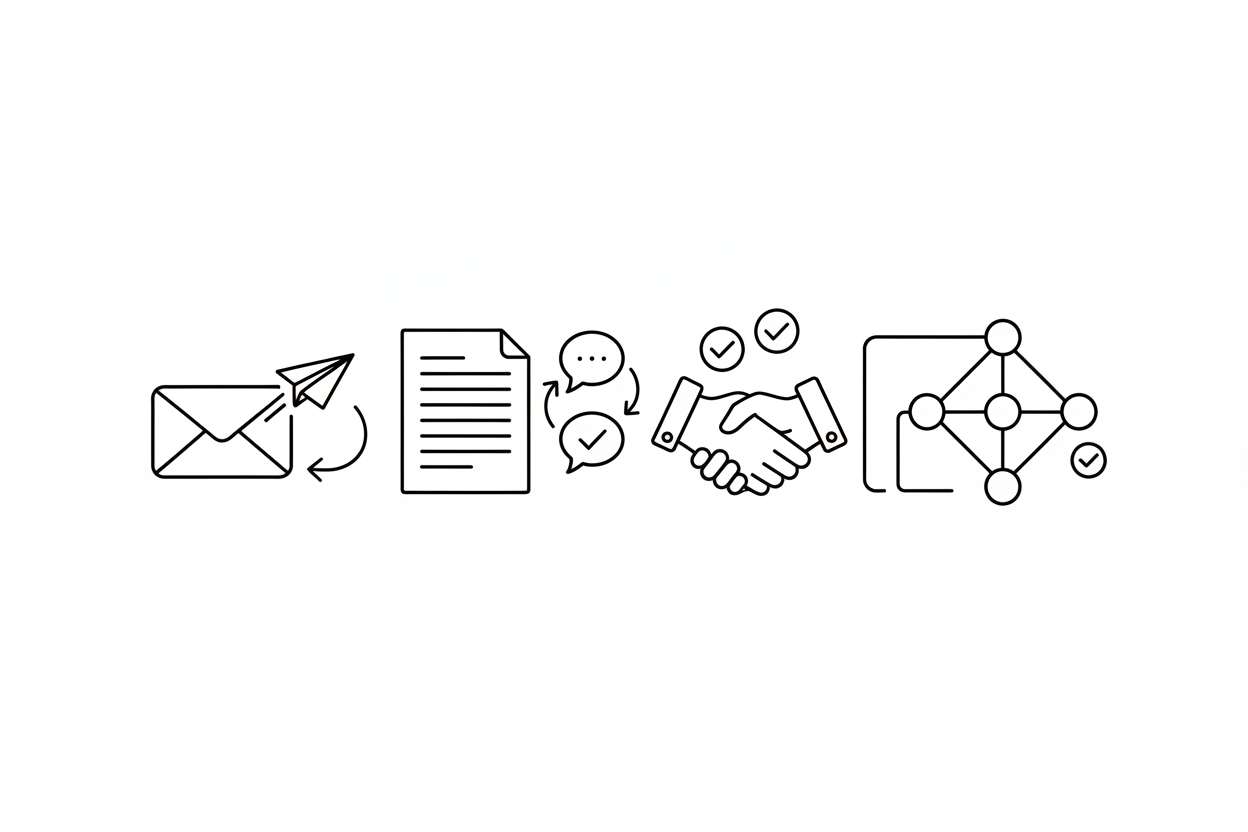You can have the best content in the world and the most meticulously researched prospect list, but if your outreach email is deleted on sight, your link building campaign is dead on arrival. The harsh reality is that most outreach emails are ignored. Editors and site owners are inundated with generic, self-serving requests, creating a wall of noise that is incredibly difficult to penetrate.
This is a guide to breaking through that noise. We will move beyond basic templates to provide a strategic framework for crafting outreach emails that are not only opened but are welcomed, read, and acted upon. You will learn the psychology of effective communication, a repeatable workflow for personalization at scale, and the key metrics to track for continuous improvement.
Chapter 1: The Mindset Shift: From "Asking for a Link" to "Offering Value"
The single most critical factor separating successful outreach from spam is the underlying mindset. Ineffective outreach is transactional and selfish ("What can you do for me?"). Effective outreach is relational and value-driven ("Here's something that might help you.").
This is the principle of reciprocity. By providing genuine value upfront—whether it's pointing out a broken link, offering an exceptional piece of content, or providing a unique insight—you fundamentally change the dynamic. You are no longer a stranger asking for a favor; you are a helpful colleague offering a solution. This mindset must inform every word you write.
Chapter 2: The 5-Step Outreach Workflow for Predictable Success
Step 1: Deep Prospect Research (Beyond the URL)
You cannot personalize what you do not understand. Before you type a single word, spend five minutes researching your contact:
- Read their recent articles: What topics are they passionate about? What is their tone and style?
- Check their social media (especially LinkedIn and X/Twitter): What have they shared or commented on recently?
- Identify their role: Are they a content manager, an editor, or the site founder? Tailor your message to their likely priorities.
Step 2: Find the Right Person and Their Email
Sending an email to info@ or a generic contact form is a recipe for failure.
- Identify the specific individual: Look for a "Head of Content," "Editor," or the author of a relevant article.
- Use email-finding tools: Services like Hunter.io or RocketReach can help you find direct email addresses with a high degree of accuracy.
Step 3: Craft a Subject Line That Earns the Click
Your subject line has one job: to get the email opened. Generic titles like "Link Building Request" are instantly deleted.
- Be Specific and Relevant: Content Idea for [Their Blog Name]
- Provide Value: A quick heads-up about a broken link
- Spark Curiosity: Question about your article on [Topic]
Step 4: Write a Value-Driven, Personalized Body
- The Personalized Opener (2 Sentences Max): Start with a genuine, specific compliment about their work. Example: "Hi [First Name], I was just reading your analysis of the future of remote work. Your point about asynchronous communication was a brilliant insight."
- The Value Proposition (The "Give"): This is the core of your email. Clearly and concisely state the value you are offering. Example: "As I was on the page, I noticed a link to an old 2019 study was broken. My team has just published the 2025 data on that topic..."
- The Soft Ask (The "Get"): Make your request a natural, low-pressure extension of the value you provided. Example: "...It might make a useful replacement for your readers."
- The Professional Close: Keep it simple and respectful of their time.
Step 5: The Art of the Polite Follow-Up
Many positive responses come from the follow-up. According to a widely-cited study by Backlinko that analyzed 12 million outreach emails, sending at least one follow-up can significantly increase reply rates.
- Timing: Wait 3-5 business days.
- Method: Reply to your original email to keep the context.
- Content: Keep it short and polite. Example: "Hi [First Name], just wanted to quickly follow up on this. Let me know if you had any thoughts!"
Chapter 3: Case Study & Key Performance Indicators (KPIs)
Case Study: A Hyper-Personalized Outreach Campaign
- Objective: Acquire links for a new data study on marketing automation.
- Action: We identified a highly targeted list of 50 marketing bloggers who had recently written about AI in marketing. Each email included a personalized first sentence referencing their specific work.
- Measurable Results:Open Rate: 72% (Industry average is ~20-30%)Response Rate: 18% (Industry average for cold outreach is ~1-5%)Success/Conversion Rate: 8% (We acquired 4 high-quality links from 50 emails)
This demonstrates that while hyper-personalization takes more time upfront, its ROI in terms of success rate is exponentially higher.
Chapter 4: Risks & Mitigation
- Risk: Being Marked as Spam. This can harm your domain's email deliverability.Mitigation: Never send mass, unpersonalized blasts. Keep your outreach volume reasonable and ensure every email is highly personalized. Warm up your email address if it's new.
- Risk: Burning Industry Relationships. A bad outreach email can damage your brand's reputation.Mitigation: Always be professional, polite, and respectful. Accept "no" gracefully. Never be pushy or demanding. The goal is to build relationships, even when you don't get a link.
Conclusion: Outreach as a Core Competency
Link building outreach is a skill that blends data, psychology, and communication. By shifting your mindset from asking to offering, you transform your emails from an annoyance into a welcome contribution. This value-first approach is the key to building a sustainable and highly effective link acquisition program.
Mastering outreach is the engine that powers every active link building tactic. To see how this engine drives the strategies of guest posting, broken link building, and more, return to our Ultimate Guide to Link Building.

